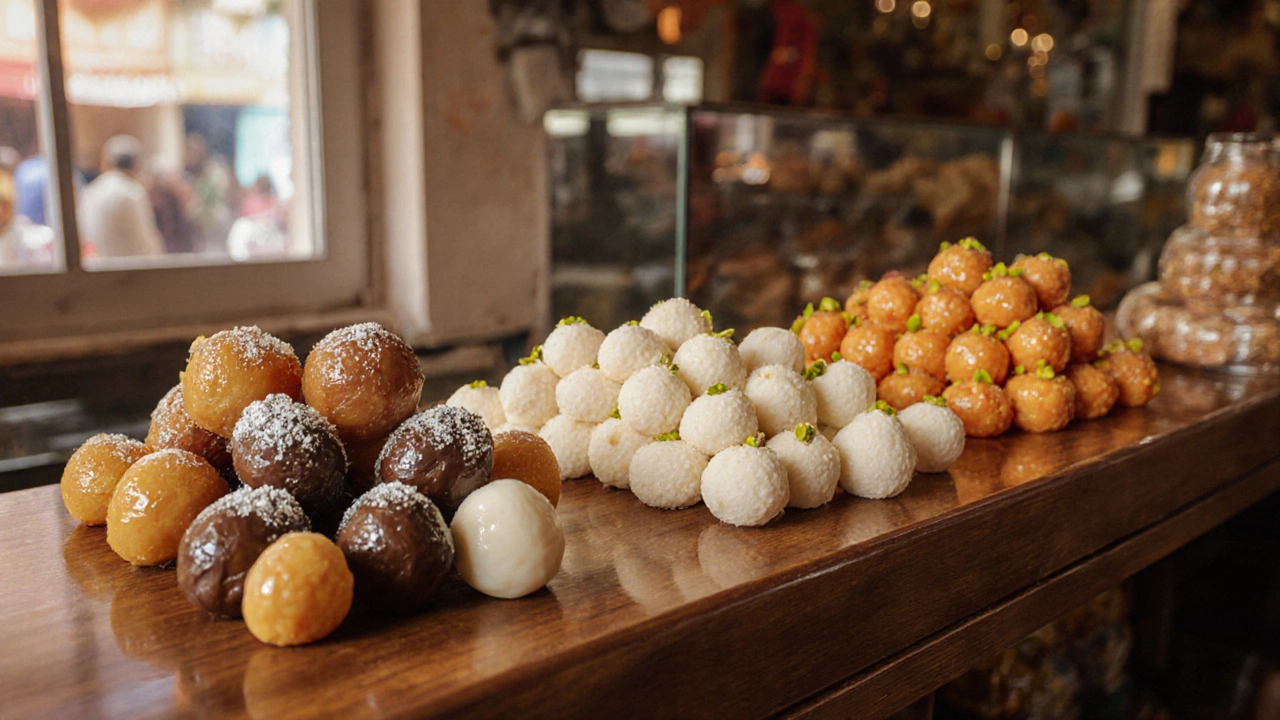Vegan Mithai Guide: Which Indian Sweets Are Plant‑Based?
Discover which Indian mithai are vegan, learn how to spot non‑vegan ingredients, and get easy swaps to make classic sweets plant‑based.
When you dive into vegan sweets, desserts made without any animal products, from cakes to candies. Also known as vegan desserts, they let anyone enjoy sweet treats while keeping the menu cruelty‑free. To pull this off you’ll need plant‑based ingredients, substitutes like almond milk, coconut oil, and aquafaba that mimic the texture and flavor of traditional dairy. Those ingredients encompass the backbone of every vegan sweet you’ll bake. Next, dairy alternatives, products such as soy cream, oat milk, and vegan butter that replace milk, cream, and butter in recipes become essential, because they require a one‑to‑one swap to keep moisture and richness balanced. Finally, vegan candy, store‑bought or homemade treats that avoid gelatin, honey, and other animal‑derived additives adds variety and shows how a small change can influence the overall dessert lineup. Together, these three entities form the core toolkit for anyone looking to create satisfying, animal‑free sweets.
First, understand that vegan sweets are not a niche gimmick; they’re a full‑featured food style that matches traditional baking in taste and texture. The main goal is to mimic the three pillars of classic desserts – fat, moisture, and structure – using plant‑based sources. For fat, coconut oil or vegan butter deliver richness, while nut butters can add a buttery depth. Moisture often comes from fruit purees, soy or oat milk, and the wonder‑ingredient aquafaba, which whips up like egg whites. Structure is where starches and flours step in; gluten‑free blends work well, but a touch of xanthan gum can help keep cakes from crumbling. When you combine these tools, you satisfy the semantic triple that "Vegan sweets require dairy alternatives, and dairy alternatives enable the same texture as traditional dairy." Second, the flavor profile of vegan desserts shouldn’t be an afterthought. Natural sweeteners like maple syrup, agave, or coconut sugar bring depth without overwhelming the palate. Spice mixes, citrus zest, and extracts (vanilla, almond, coffee) add layers that rival any conventional bake. If you’re aiming for a chocolatey punch, choose high‑quality cocoa powder and combine it with a dash of espresso powder; the bitterness balances the sweetness perfectly. This approach mirrors the triple "Vegan candy influences dessert variety, and variety drives consumer interest in plant‑based sweets." Third, the practical side matters. Stock your pantry with a few staple items: a reliable brand of vegan butter, a milk alternative you enjoy drinking, and a bag of aquafaba (or the liquid from a can of chickpeas). Keep a small stash of dairy‑free chocolate chips for quick melt‑and‑pour applications. When you’re ready to experiment, start with an easy recipe – a one‑bowl banana bread using oat milk, coconut oil, and a handful of walnuts. Once you’re comfortable, move on to more complex projects like vegan macarons or layered mousse cakes. Throughout, remember that the goal is to keep the process enjoyable; if a step feels too technical, look for a simplified version or a video walkthrough.
Now that you’ve got the essentials, the collection below will walk you through specific tricks, ingredient deep‑dives, and recipe ideas. From a detailed look at how cream of tartar can improve fudge texture without dairy, to a quick guide on whether popular candies like Skittles are truly vegan, each article adds a piece to the puzzle. Keep reading to discover actionable tips, debunk common myths, and find inspiring recipes that prove vegan sweets can be every bit as indulgent as their traditional counterparts.

Discover which Indian mithai are vegan, learn how to spot non‑vegan ingredients, and get easy swaps to make classic sweets plant‑based.